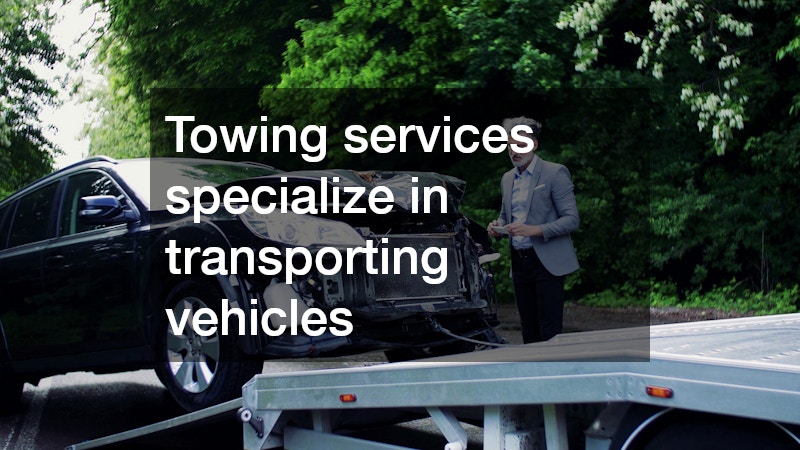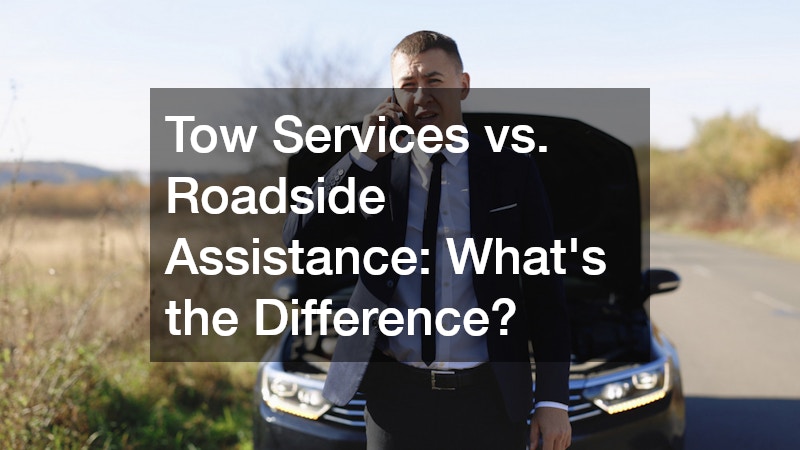When your vehicle breaks down unexpectedly, knowing who to call can save you time, stress, and even money. Many drivers are familiar with both tow services and roadside assistance, but the distinction between the two isn’t always clear. While both can help you in times of automotive trouble, they serve different purposes, and understanding their differences can help you make the right choice when emergencies strike.
What Are Towing Services?
Towing services are specialized operations designed to transport vehicles safely from one location to another. Whether your car has been involved in an accident, experienced a major mechanical failure, or is illegally parked, towing services provide a reliable way to move your vehicle. Unlike general roadside assistance, which often focuses on minor fixes at the scene, tow services handle situations where your car cannot be driven safely or at all. These services typically use a fleet of tow trucks equipped with specialized tools, such as flatbeds, wheel lifts, and winches. Operators are trained to handle vehicles of varying sizes, from compact cars to large trucks, ensuring your car is transported without additional damage. Many towing services are available 24/7, making them an essential resource for unexpected emergencies.
What Is Roadside Assistance?
Roadside assistance, on the other hand, is designed to help drivers handle minor issues and inconveniences on the road. Common situations include jump-starting a dead battery, changing a flat tire, delivering fuel, or unlocking a vehicle when keys are locked inside. These services are often available through insurance plans or as membership programs, providing drivers with peace of mind when traveling. While roadside assistance is extremely useful for small problems, it usually does not cover situations that require a vehicle to be transported. If a car is severely damaged or cannot be driven, a professional tow service is necessary to move it safely to a repair facility.
Key Differences Between Towing and Roadside Assistance
The main difference between tow services and roadside assistance lies in the scope and scale of the help provided. Towing services specialize in transporting vehicles, often after accidents or major mechanical failures, while roadside assistance focuses on temporary solutions that allow drivers to continue their journey. Tow trucks come equipped with specialized equipment operated by trained professionals, whereas roadside assistance technicians usually carry tools for minor repairs but are not equipped for full vehicle transport. Costs also vary, as roadside assistance is often included in insurance policies or offered at a flat annual rate, while towing services are generally charged per tow, with fees influenced by distance and vehicle type. Ultimately, roadside assistance addresses minor issues, while towing services are essential for severe breakdowns, accidents, or situations where the vehicle cannot safely move under its own power.
When to Call Towing Services
Calling tow services becomes necessary when a vehicle cannot be driven without risking further damage or endangering the driver. Major engine or transmission failures, accident-damaged vehicles, cars stuck in mud or snow, and long-distance relocation of a vehicle are all situations that require professional towing. Attempting to drive a severely damaged vehicle can lead to more expensive repairs or create safety hazards on the road. Towing services provide a reliable and safe way to transport vehicles to repair shops or storage facilities, preventing additional complications. Their trained operators and specialized equipment make them the go-to solution for serious automotive emergencies.
When Roadside Assistance Is Enough
There are many situations where roadside assistance can provide immediate help without the need for a tow. A flat tire that can be replaced with a spare, a dead battery requiring a jump-start, a small fuel delivery, or being locked out of a vehicle are all problems that roadside assistance can typically handle on-site. These services are convenient, fast, and often less expensive than calling a tow, making them ideal for minor issues. Roadside assistance is especially beneficial for frequent travelers or drivers who want the peace of mind that help is just a phone call away, allowing them to get back on the road quickly and safely.
Combining Towing Services and Roadside Assistance
Using both tow services and roadside assistance together often provides the most comprehensive coverage for drivers. For example, if a car breaks down far from home, roadside assistance may attempt a quick fix on-site. If the problem cannot be resolved, a tow service can then safely transport the vehicle to a trusted repair shop. Many roadside assistance providers partner with towing companies, streamlining the process and reducing stress for the driver. Being prepared with both options ensures that nearly any automotive emergency can be handled efficiently, giving drivers peace of mind and reliable support on the road.
While tow services and roadside assistance both aim to help drivers in distress, their functions are distinct. Towing services focus on safely transporting vehicles that cannot be driven, while roadside assistance addresses minor, fixable problems at the scene. Understanding the difference between the two can save drivers time, money, and stress during emergencies. Whether you face a flat tire, a dead battery, or a major accident, knowing when to call a tow service versus relying on roadside assistance can make all the difference. Keeping both resources accessible ensures that you are prepared for any situation, creating a safer and more confident driving experience.

